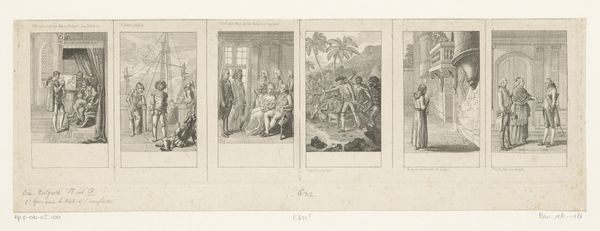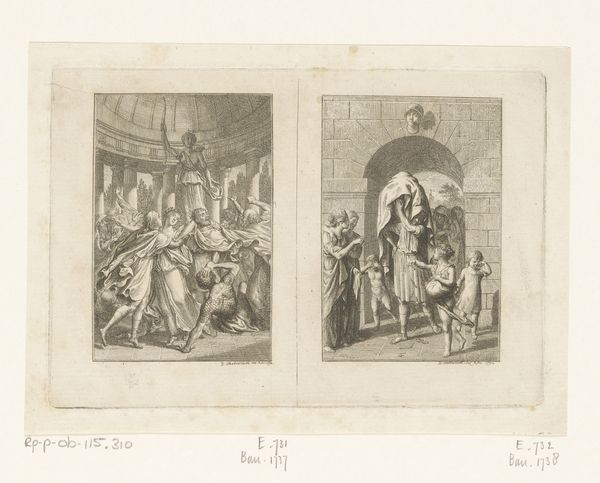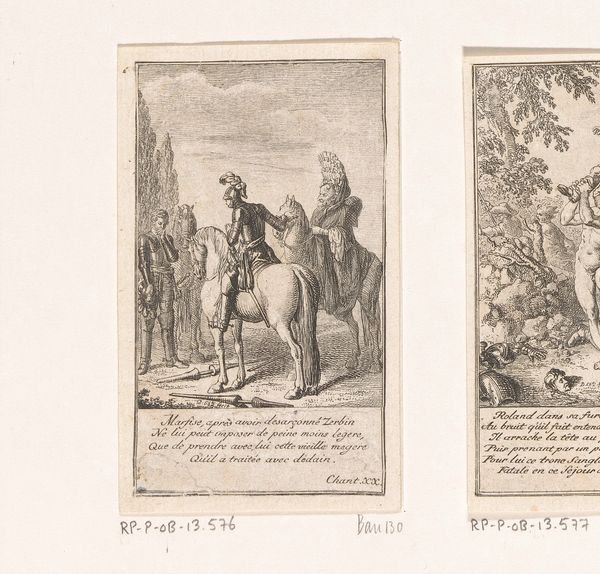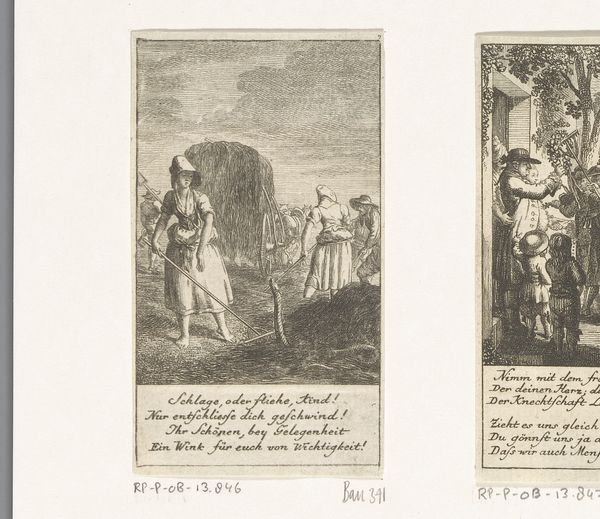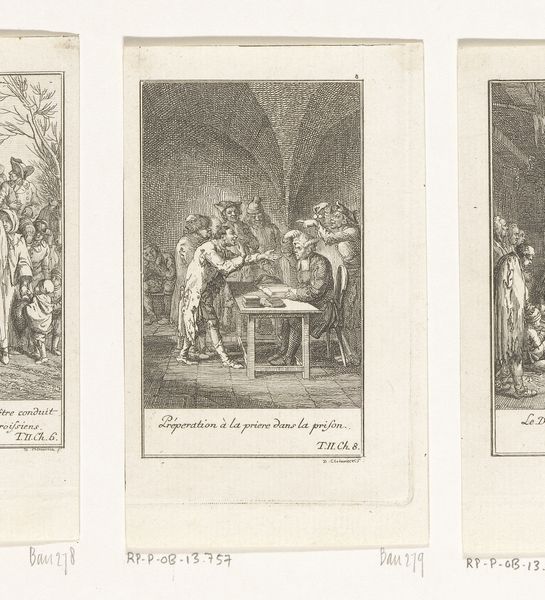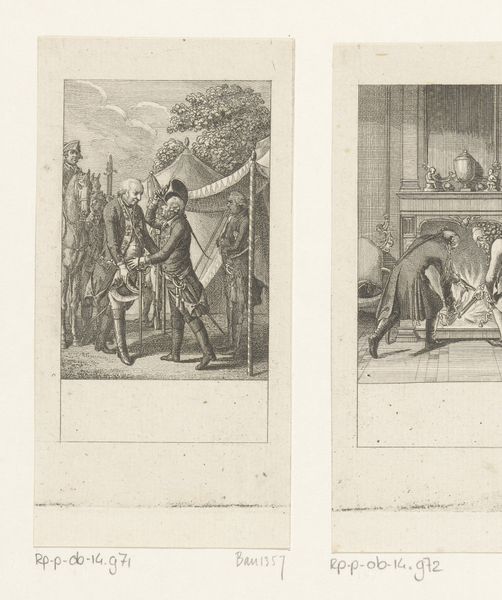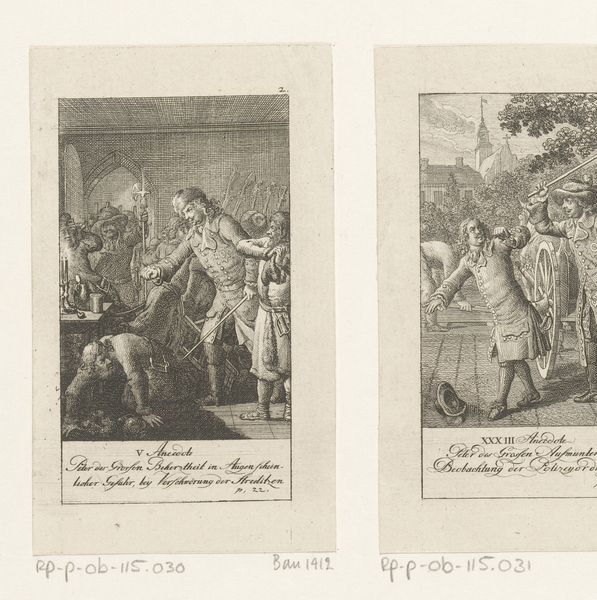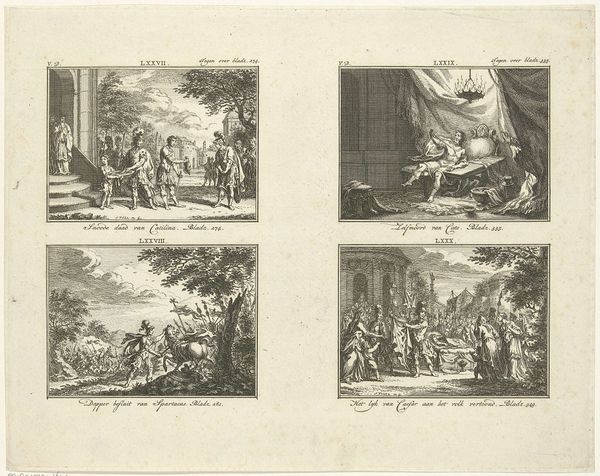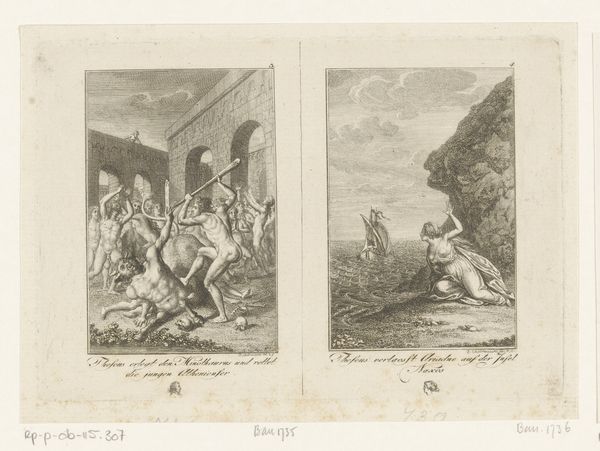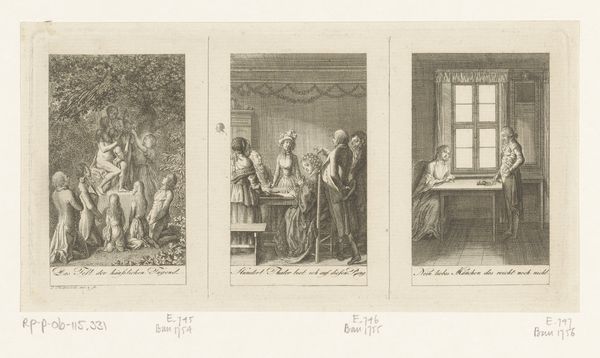
Drie voorstellingen uit de nieuwere Franse geschiedenis 1794
0:00
0:00
print, etching, engraving
#
narrative-art
# print
#
etching
#
romanticism
#
history-painting
#
engraving
Dimensions: height 114 mm, width 206 mm
Copyright: Rijks Museum: Open Domain
Editor: Here we have Daniel Nikolaus Chodowiecki's 1794 engraving and etching, "Drie voorstellingen uit de nieuwere Franse geschiedenis," or "Three scenes from recent French history". The contrast feels stark and unsettling, and it really drives home how history is a manufacturing of specific moments. What's your take? Curator: It's intriguing to consider this print not just as a window into the French Revolution, but as a product *of* its time. The lines are etched, acid literally eating away at the metal plate. What societal forces were at play when this was being produced? Editor: I hadn't thought of it that way, the etching process as a… reflection of the revolutionary period itself, almost? The corrosive element shaping the narrative... Curator: Precisely. Notice how the artist uses different levels of detail across the three scenes. Consider the accessibility of prints in the late 18th century, their use as propaganda, or even simple news dissemination. How did these material conditions impact what stories were told, and how they were consumed? The act of creating the work implicates the creator. Editor: So you’re suggesting that the print, beyond depicting events, actively participated in shaping public perception? It wasn't just a neutral recorder? Curator: Absolutely. The choice of engraving and etching speaks volumes. This isn't an oil painting destined for a palace; it’s a reproducible image, aimed at wider circulation. Who was consuming these images and what did the ability to cheaply reproduce and share news and historical accounts change about their society? Editor: That changes my understanding of the piece entirely! Seeing it not just as a depiction, but as an object deeply embedded in the social and material conditions of its creation, makes the history even more alive. Curator: Exactly, it's about tracing the material conditions back to their historical implications. I think you have an excellent perspective now!
Comments
No comments
Be the first to comment and join the conversation on the ultimate creative platform.
